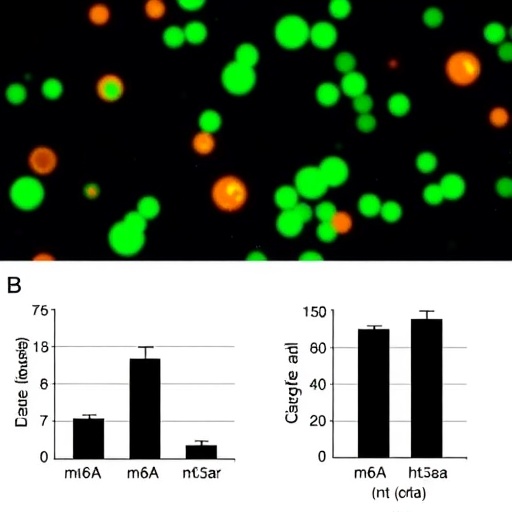This approach to finding genetic regulators, the scientists say, may have the power to provide insight into the development of any tissue in the body – liver, brain, blood and so on.
A stem cell has the potential to become any type of cell. Once the choice is made, the cell and other stem cells committed to the same fate divide to form organ tissue.
A University of Washington-led research team was particularly interested in how stem cells turn into heart muscle cells to further research on repairing damaged hearts through tissue regeneration.The leaders of the project were Dr. Charles Murry, a cardiac pathologist and stem cell biologist; Dr. Randall Moon, who studies the control of embryonic development, and Dr. John Stamatoyannopoulos, who explores the operating systems of the human genome. The paper’s lead author is Dr. Sharon Paige, a UW M.D./Ph.D. student who completed her Ph.D. in Murry’s lab.
The results are published in the Sept. 28 edition of Cell.
Paige, an aspiring pediatric cardiologist, said, “By identifying regulators of cardiac development, this work has the potential to lead to a better understanding of the causes of congenital heart disease, thereby paving the way for therapeutic advances.”
Previously UW researchers had examined the signals that prod cells to grow into various kinds of heart tissue. In this case, the researchers entered a relatively unexplored area. They decided to look at the genetic controls behind the transformation of stem cells into heart tissue. Because stem cells keep their DNA code under wraps until needed, the scientists examined how this packaging is altered over time to permit reading of portions of the code and thereby produce changes in the cell.
DNA is wound up into a structure called chromatin. “DNA can be packaged as tightly closed, neutral or activated,” Murry explained. The tightly closed state, he said, is analogous to setting the brakes on a car.
Like a child who clams up when asked, “What will you be when you grow up?” stem cells are protective of the genes that will determine their future cell type, or what scientists call their cell fate.
“We found that stem cells take great care to avoid turning on cell-fate regulating genes at the wrong time,” Murry said. “These genes have their brakes on until they are needed.” When the time is right, he said, “the brakes come off and the gas goes on.”
He explained that the situation is different for genes that regulate cell functions, in contrast to those that regulate cell fate. Genes that control, for example, the production of proteins that allow the cell to contract or to generate electrical signals do not have such a complex braking system. Those genes can be more readily activated.
The researchers pointed out that it was already known that the patterns stem cells follow to modify their DNA packaging distinguished them from progenitor cells – cells prepared to begin a lineage of a particular type of cell – and also from cells that already had a working identity, such as blood or muscle cells.
However , the dynamics of the DNA packaging modifications – how the packaging is programmed to change over time—and how these dynamics influence which genes are “exposed” and activated to create, for example, heart muscle cells, was poorly understood.
The UW-led research team learned that, as human embryonic stem cells become heart cells, this differentiation is accompanied by distinctive dynamic alterations in DNA packaging. This tell-tale pattern enabled the scientists to distinguish the key regulators of heart development from other genes. The researchers referred to the carefully timed pattern of changes in the DNA wrapping as a “temporal chromatin signature.”
Just as a bank robber leaves incriminating evidence in a handwritten note to the teller, the temporal chromatin signature gave the scientists the clues they needed to hunt down new genes that might be responsible for heart formation.
“We found a bunch of them,” Murry said. Their system revealed the top candidate to be the homebox gene MEIS2. This gene seemed an unlikely choice because it had no previous record of participating in heart formation. However, when this gene was removed from a new generation of zebra fish, the developing fish embryos had heart tube formation defects and other heart abnormalities.
Murry and other members of the research team think patterns in DNA unwrapping could be broadly applicable to discovering the genes that regulate other aspects of tissue and organ formation beyond only the heart. Such a research approach might help reveal the major developmental decisions that occur inside of cells as an embryo forms and grows. These revelations could provide information useful to spurring stem cells to form specific tissues for organ repair later in life.
Acknowledging the limitations of a lab system in mimicking what happens inside living cells in the early stages of organ formation in humans, Murry said, “The use of the temporal chromatin signature to discover regulatory genes could give us new insights into human development and new tools to control cell fate.”
This study was supported by grants from the National Institutes of Health P01 GMO081719, U01 HL100405, P01 HL094374, R01 HL084642, R01 HL64387, R03 AR057477, and the UW ENCODE Center (U54HG004592). Randall Moon is a Howard Hughes Medical Institute Investigator.




